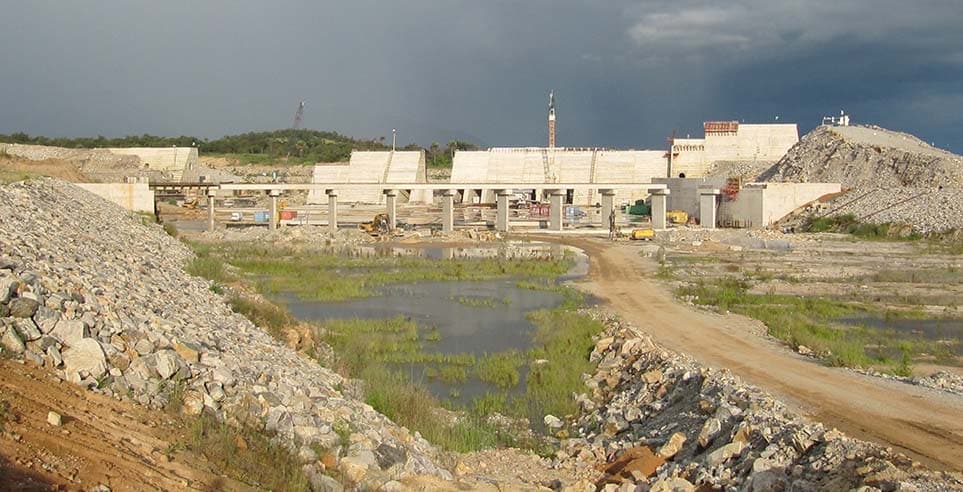The hope of improving electricity supply in the country has received a boost as the Federal Government, Monday, approved the constitution of two committees for the multi-billion naira Mambilla Hydroelectric Power Project in Taraba State.
The committees, which include the Inter-ministerial Steering Committee, IMSC, and Project Delivery Committee, PDC, are expected to be inaugurated soon.
A statement by Aaron Artimas, Special Adviser, Media and Communications to the Minister of Power, said, members of the Inter-ministerial Steering Committee are representatives of federal agencies and Taraba State government.
It noted the Minister of Power, Mr. Sale Mamman, will chair the Inter-ministerial Steering Committee, while the Director in-charge of Renewable Energy in the Federal Ministry of Power will head the Project Delivery Committee, reporting to the Minister of Power through the Permanent Secretary of the Ministry.
The federal agencies named in the committees include Ministries of Water Resources, Environment, Finance, Budget and National Planning, Works and Housing, Justice, Information and Culture, and Mines and Steel Development.
Others are representatives of the Secretary to the Government of the Federation, National Security Adviser, NSA, Nigeria Sovereign Investment Authority, NSIA, and the Nigeria Customs Service, NCS.
The terms of reference of the Inter-ministerial Steering Committee include facilitating and fast-tracking the execution and project delivery of the Mambilla Hydroelectric power project; finalizing within six months the review of the project engineering and technical design concept to achieve optimal efficiency and benefit the immediate target market (the Northeast geopolitical zone); as well as obtaining approval of the Loan Facility from the China Exim Bank for the Off-shore component of the project based on the reviewed contract price.
The Inter-ministerial Steering Committee will be supported by the Project Delivery Committee, which will be responsible for overseeing the implementation of the project in line with agreed timelines and deliverables, including design a framework for post-project operational management that will ensure that the project starts performing from the point of delivery.
Also, an independent consultant will serve as a project coordinator to coordinate the administrative and stakeholder aspects of project implementation.
Mambilla hydropower project is a 3.05GW hydroelectric facility being developed on the Dongo River near Baruf, in Kakara Village of Taraba State, Nigeria.
The project is being undertaken by Nigeria’s Federal Ministry of Power, Construction and Housing, with the help of Chinese investments.
Expected to commence operation in 2030, Mambilla will be Nigeria’s biggest power plant, producing approximately 4.7 billion kWh of electricity a year.
The project is estimated to cost $5.8 billion and will generate up to 50,000 local jobs during the construction phase.
Although Mambilla hydroelectric project was originally conceived in 1972, it could advance only after 35 years when China’s Gezhouba Group awarded a contract to develop the project with 2,600MW installed capacity in 2007.
The ground survey for the project was completed in August 2010 and environmental approval was received in December 2011.
The capacity of the project was increased to 3,050MW in 2012. The project was, however, put on hold due to administrative clashes, until it received government approval in 2016.
Nigerian Federal Ministry of Power Works and Housing awarded the project development contract to a consortium of three Chinese companies including the Gezhouba Group, in November 2017.
Mambilla hydropower plant
Mambilla hydroelectric facility will comprise four dams and two underground powerhouses having 12 turbine generator units in total.
The four dams to be constructed on the Dongo River for the Mambilla hydropower project include Nya (formerly known as Gembu), Sumsum, Nghu and Api Weir dams.
Nya and Sumsum will be 100m and 35m-tall roller compacted concrete (RCC) dams with a crest length of 515m and 460m, respectively.
Nghu will be a 95m-high rockfill dam with a crest length of 650m, while Api Weir will be a small regulatory dam to raise the water level of the river.
Nya and Sumsum dams will be connected through a 16km-long, 6m-diameter tunnel, whereas Sumsum and Nghu dams will be connected by a 1.5km-long and 10m-wide canal.
The headrace canal for the plant will be 3.1km-long and 15m-wide.
Each underground powerhouse of the plant will measure 175mx27mx38m and house six 250MW Pelton turbine units operating at a total dynamic head of 1,007m.The diameter of the power shafts connecting each turbine will range between 5.25m and 8.40m.
Two 6km-long tailrace tunnels for the plant will be of 8m diameter each, while the tailrace canal will be 3km-long and 25m-wide.

